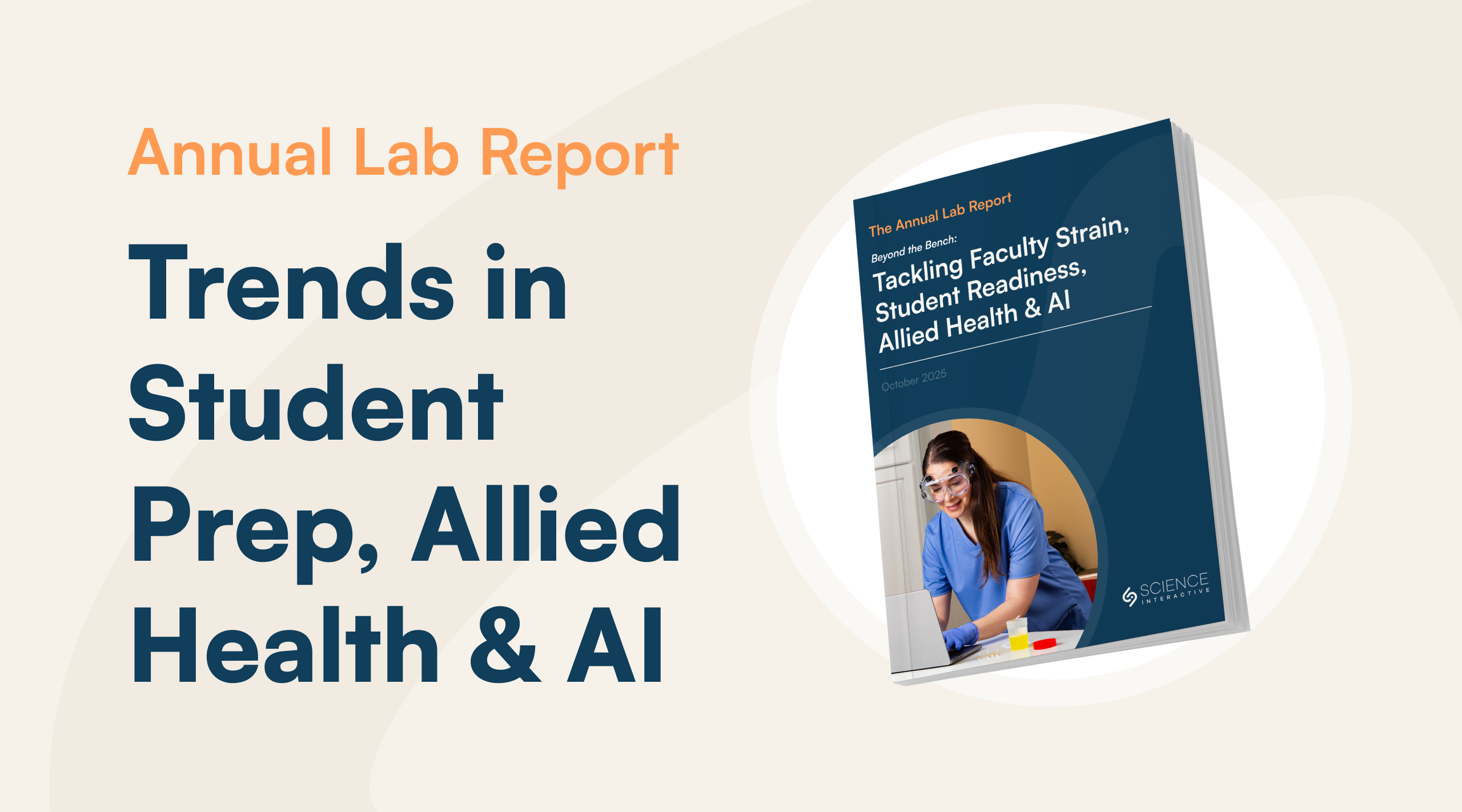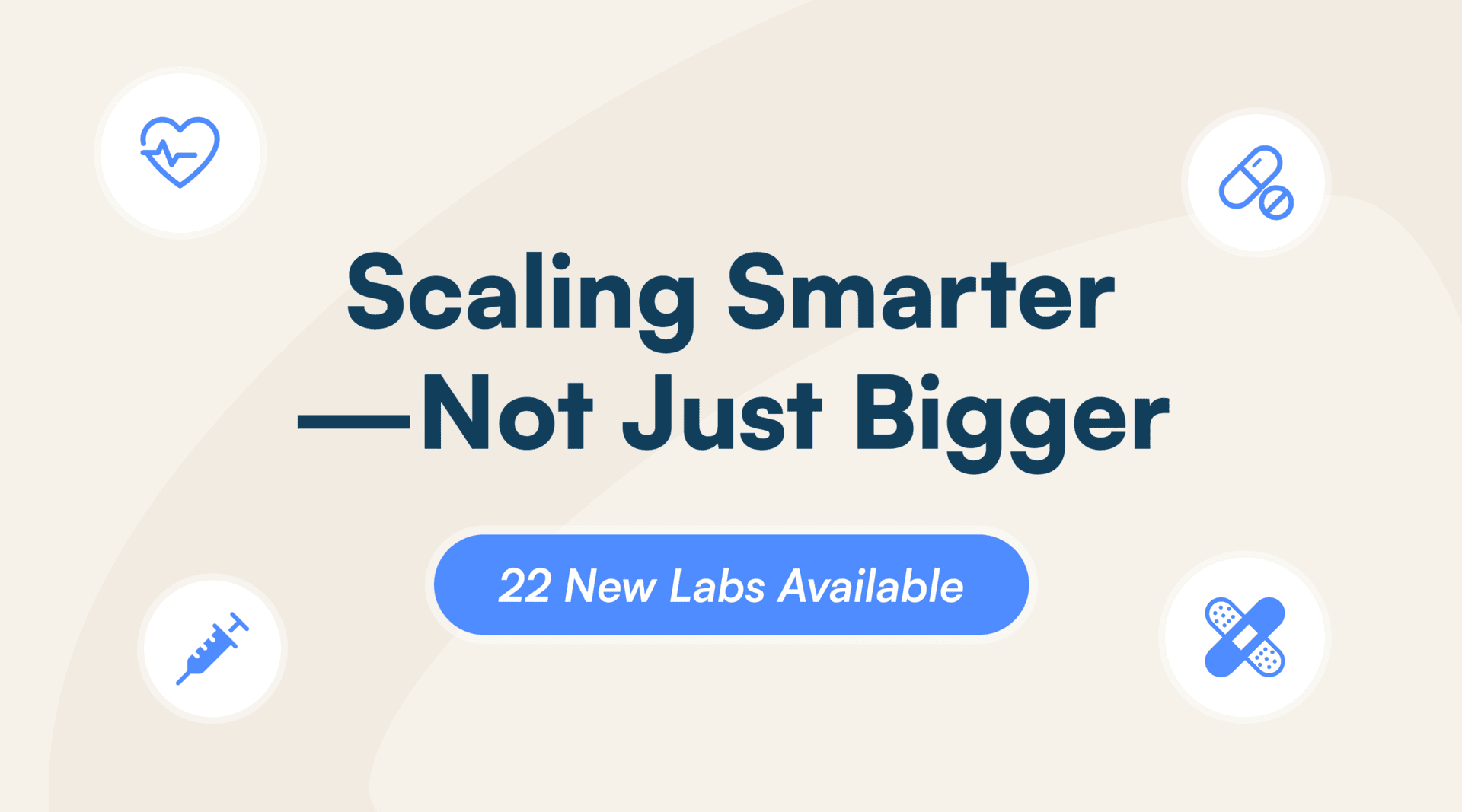The Confidence Gap Nobody Talks About
Clinical placements aren’t for first-time practice. They’re for performance improvements. You can teach dosage calculations, care plans, and infection control protocols until the cows come home. But when a student stands next to a hospital bed for the first time, hands shaking, IV tubing coiled in confusion, none of that matters if they haven’t practiced.
And instructors see it coming. That “oh no” moment during clinicals when a student freezes, despite weeks of lectures and simulations, is painfully familiar. It’s not a question of knowledge. It’s a question of confidence, and confidence doesn’t magically show up in week six. It has to be built.
According to over 1,600 students surveyed, the top challenge in lab courses isn’t the volume of content. It’s preparedness—feeling like they’re ready to act when it’s time to perform.
The takeaway? If we want students to walk into clinical placements ready—not panicked—we have to give them the tools to practice early, often, and intentionally.
Clinical Placements Aren’t the Place to Wing It
Hospitals can be classrooms; they just can’t be the place you’re doing it for the first time. Preceptors don’t have time to explain how to wrap a wound or measure blood pressure. They expect students to walk in with a baseline repertoire of skills already baked in.
But let’s be honest. Plenty of students arrive at their placements without ever drawing blood outside of a demo. The consequence? Clinical preceptors grow frustrated. Faculty end up reteaching basics mid-semester. Students lose confidence, fast.
This isn’t just anecdotal. A 2022 report from the National League for Nursing found that insufficient practice opportunities is one of the most commonly cited barriers to clinical readiness. This finding highlights a critical challenge in nursing education, as adequate clinical practice is essential for students to develop the necessary skills and confidence to transition into professional nursing roles.
The Importance of Clinical Readiness:
- Clinical readiness refers to a nursing student’s ability to provide safe and high-quality care, encompassing competencies in communication, critical thinking, problem-solving, and practical skills.
- It’s crucial for bridging the gap between theoretical knowledge and real-world application, ultimately ensuring graduates are prepared for the demands of the profession.
With limited access to clinical sites and preceptors, insufficient practice opportunities coupled with faculty shortages, can restrict students’ opportunities for hands-on learning.
Impact of Insufficient Practice:
- Reduced confidence: Students may feel unprepared to handle real-world clinical situations.
- Lower self-perceived competence: A lack of hands-on experience can negatively impact students’ belief in their abilities.
- Difficulty transitioning to practice: Graduates may experience a “transition shock” or struggle to adapt to the demands of their new roles.
If you’re teaching Fundamentals or supervising first clinicals, you already know this. The fix isn’t more lectures—it’s more reps.
From Nervous to Capable: How Confidence Is Actually Built
To address this gap, focus on the quality of practice exercises and clinical experiences, rather than just the number of hours, while building in access to simulation experiences.
It’s hard to build clinical confidence through PowerPoints or one-off demos. You build it through physical practice—hands touching real tools, nerves engaged, mistakes made and corrected.
Confidence is procedural, not conceptual. Students don’t need to just know how to administer an injection. They need to do it—multiple times, in a low-stakes environment, with immediate feedback. That’s how muscle memory is formed. And that’s what changes everything when students step into a clinical setting. They’re not guessing. They’re ready.
Science Interactive’s 22 hands-on and virtual labs and all-new nursing fundamentals helps students lay a strong foundation, building the essential skills and knowledge to pursue a nursing degree, whether that’s online, in person or somewhere in between. The curriculum was built specifically to help students turn theory into practice, without having to overhaul your course or haul in a boatload of extra materials to campus.
The labs are aligned with the OpenStax Clinical Nursing Skills textbook and built by credentialed subject matter experts to meet CCNE and ACEN standards.
The professional grade hands-on Nursing Fundamentals kit comes with everything a student needs to gain the procedural confidence they need before entering a clinical placement.
Here’s a taste of what’s inside:
🩺 Vital signs tools: thermometer, manual BP cuff, stethoscope, pulse oximeter
💉 Injection practice: professional-grade injection arms and needles
🩸 Blood draw equipment: realistic venipuncture arm with lifelike tissue and veins
🧼 Wound care supplies: materials and dressings for cleaning and bandaging
And because kits ship directly to students, they work for online, hybrid, or on-campus programs. You don’t need to rebuild your course—just slot the hands-on activities into your existing syllabus.
A Sample Lesson Flow (That Won’t Wreck Your Planning)
At this point, you might be asking: What type of labs are there and how much time is this going to take me?
Don’t worry … you don’t need to reinvent your curriculum to integrate real skills practice. Here’s how a weekly module might look using our Administering Injections (both virtual and hands-on) lab, during which students use a patient volunteer to practice:
- Discussing the relationship between health and injectable medication administration
- Describing how to administer several types of injectable medications
- Performing intradermal, subcutaneous, and intramuscular injections using an injection practice pad
To build this lab into your syllabus:
- Start with theory: assigned reading or recorded lecture
- Move into virtual lab: reinforce concepts with low-pressure simulations
- Practice performing intradermal, subcutaneous, and intramuscular injections using an injection practice pad
- Wrap with reflection: written or video submission, with instructor feedback
Pair Virtual Labs With Hands-On Practice Works. Here’s Why.
Let’s clear something up: this isn’t “DIY nursing school.” Science Interactive doesn’t send students a kit and hope for the best. It’s all about pairing virtual and physical learning, and instructors remain at the center.
In fact, last year’s survey of 1,600+ students found that many pre-lab activities aren’t working because they’re too conceptual and disconnected from real skills. What students do want? Clear, guided practice that prepares them for real clinical tasks.
Here’s what works better:
- Pre-lab simulations to introduce concepts before stepping foot into a lab OR a virtual lab simulation before a hands-on at-home lab
- Hands-on experiment to put that theory learned into practice
- Structured reflection or quizzes to cement the learning
This isn’t fluff—it’s strategy. And it works whether you’re teaching online, hybrid, or on-campus.
Hands-On Practice That Meets Academic Rigor
The discipline introduces procedural and assessment-focused labs tailored specifically for nursing education. Sample lab topics include:
- Vital Signs Assessment – Develop essential skills using professional tools to measure temperature, pulse, respiratory rate, blood pressure and oxygen saturation.
- Medication Administration Administering Injections – Examining the relationship between health and injectable medication administration and performing intradermal, subcutaneous, and intramuscular injections using a practice pad.
- Blood Draw Procedures – Practice venipuncture using high-quality simulation arms with realistic vein and tissue models.
- Wound Care and Dressing – Learn effective wound assessment, cleaning and dressing using dressing supplies.
This is delivered through an integrated lab portal that walks students through every step and helps them test their knowledge along the way. The Lab Portal integrates with your LMS, making it easy for instructors to assign labs, track completion, and assess performance. Fewer emails. More teaching and learning.
Everything aligns with what you’re already teaching. Students build procedural confidence while you keep control of content, pacing, and grading.
Why Instructors Actually Love This (No, Really)
Let’s face it. Lab prep can be a logistical nightmare. It always feels like you’re down to your last few pairs of gloves, dried-out simulants, and that one student who can never find their stethoscope.
Here’s what instructors say they love about using the hands-on kits, especially for on-campus labs:
✔️ No more scavenger hunts — everything arrives pre-packed for students
✔️ Zero lab assembly — no stocking, cleaning, or refilling kits
✔️ One-click grading — built-in rubrics and dashboards in the Lab Portal
✔️ Scalable setup — perfect for adjuncts, multi-section courses, or remote cohorts
Lisa Jones of Aiken Technical College uses SI’s hands-on kits for her on-campus labs to free up her time for deeper instruction.
“Having everything together and in one place makes it easy for students to go get their kit at the bookstore—they don’t have to purchase it separately because it’s rolled into a course fee—and then come to campus to do the lab portion together in groups. I spend less time tracking down items and more time focused on teaching and learning. Plus, they get real-world practice, and it shows them the possibilities of what they’ll do in their clinical setting.”
What “Clinical-Ready” Actually Looks Like
You can see it. Students show up knowing where to start. They don’t freeze at the sight of an IV arm. They remember how to swab, inject, and apply pressure with confidence. They don’t rush, but they also don’t stall out.
Still, every instructor knows the students who “get it” on paper but panic in practice. The good news is that this doesn’t have to be the norm.
Our all-in-one solution for nursing helps instructors bridge the gap, giving students structured, hands-on practice early in the course, before they ever walk into a clinical site.
That’s the kind of readiness Science Interactive supports. Repetition. Clarity. Confidence.
And it’s not just better for students. It’s better for preceptors, for instructors, and for patients. Because readiness isn’t just about knowledge—it’s about muscle memory, and we can help students build it.
Give us 30 minutes, and we’ll show you how. Book a demo today!
Discover more articles

Research Reveals a Dual Prep Problem in STEM Courses & New Opportunities to Deliver Rigor at Scale

Science Interactive Launches New Nursing Fundamentals

